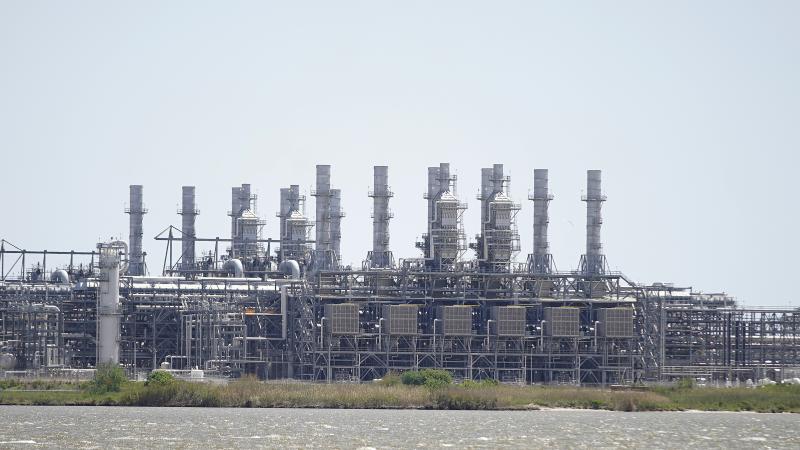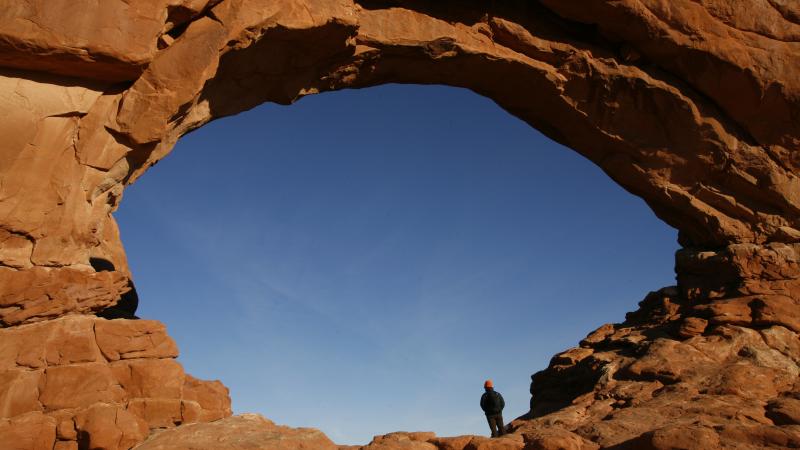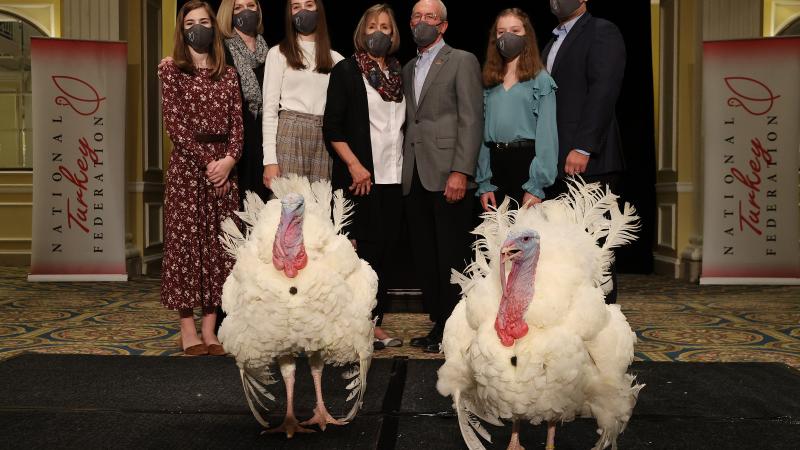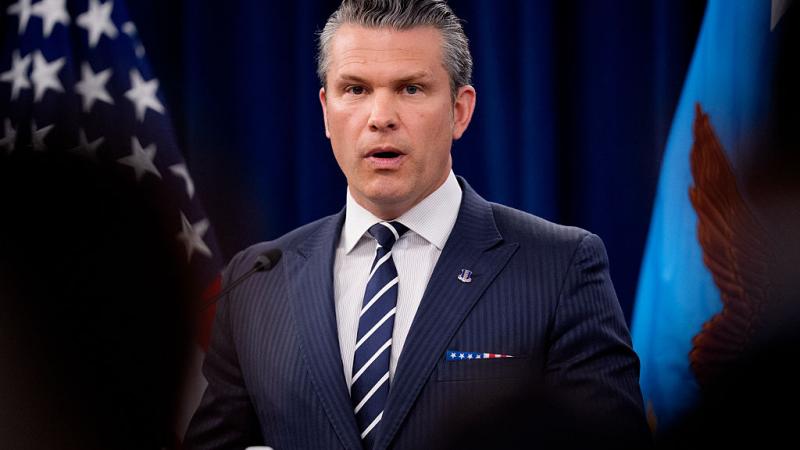Wyoming conservation group says feds improperly withholding records on eagle deaths from wind farms
The Interior Department withheld most of the records under an exemption that applies to "trade secrets and commercial or financial information." The Albany County Conservancy filed an appeal challenging the exemption.
The Albany County Conservancy, based in Laramie, Wyo., has been raising concerns about the rapid pace of wind farm development in Wyoming’s eagle migration corridors.
Anne Brande, the conservancy’s executive director, told Just the News that the projects are permitted in a rushed manner that doesn’t adequately consider their impacts, especially the cumulative impacts of thousands of turbines across multiple projects.
Recently, the group filed a request under the Freedom of Information Act, seeking records on the reported eagle deaths and injuries within two miles of three operating wind projects in southern Wyoming.
The Interior Department responded by releasing 256 pages and withholding 910 pages. The agency withheld the records under Exemption 4, which regards "trade secrets and commercial or financial information obtained from a person [that is] privileged or confidential." The group filed an appeal last week challenging the exemption and demanding the department release all the data it has related to the request.
Brande said wind farm owners are required to collect this information as part of the eagle take permits the developers are required to have in order to disturb, injure and kill eagles. This data is public information submitted to federal agencies as part of their permitting, she said, and the department has no legitimate justification for withholding it.
“Eagle death counts are not proprietary. It’s not a trademark,” Brande said.
Rush to build
Wyoming ranks eighth in the top 10 states for wind energy potential, and wind developers have been feverishly developing wind energy in the southern part of the state. According to the Department of Energy’s WindExchange data, Wyoming has 2.5 gigawatts of installed wind energy capacity, and another 3.5 gigawatts under construction.
With an average capacity of approximately 3 megawatts per turbine, the state could be home to over 2,000 wind turbines in the next several years, most of which will be concentrated in small pockets of high-wind areas of the state.
In December, the Albany County Conservancy filed a complaint against the Department of Interior over its permitting of the Rail Tie Wind Project, which is planned for construction in southeast Wyoming. The lawsuit argues that the review of the project’s impacts to the environment and historic sites as part of the permitting process was inadequate, as were the legally required public participation aspects.
Following President Donald Trump’s moratorium on new offshore wind leases, which paused the leases while a review of the impacts of offshore wind is conducted, the Albany County Conservancy sent a letter to Attorney General Pam Bondi, Energy Secretary Chris Wright, and Interior Secretary Doug Burgum requesting an immediate suspension of authorizations for the Rail Tie Wind project.
The letter argues that the concerns outlined in Trump’s executive order apply just as easily to onshore wind projects, like Rail Tie Wind. The group hasn’t received a response.
Golden eagle migration corridor
Mike Lockhart, who was a co-petitioner in the complaint regarding the permitting of Rail Tie Wind, has been satellite tagging golden eagles in Wyoming since 2014 and researching the impacts of wind energy development. Lockhart is a biologist who spent over 32 years with the U.S. Fish and Wildlife Service.
His studies found that 82% of documented eagle deaths were human-caused, and over 43% of those known deaths of tagged eagles were caused by wind turbines. This makes the turbines the leading cause of human-related eagle fatalities in Wyoming, exceeding the portion killed by vehicle collisions, shootings and electrocutions.
Lockhart is supportive of wind energy and climate initiatives to reduce emissions, but he argues that extensive wind farm development in the eagle migration corridors of southern Wyoming is poor siting for the projects.
“This high desert ecosystem, connecting multiple mountain ranges, encloses the Shirley and Laramie Basins in southeast Wyoming. It is one of the most important areas for golden eagles in North America,” Lockhart said in a statement.
Very limited data release
Hoping to get some government data to incorporate into their understanding of the impacts of wind energy on eagles, the Albany County Conservancy filed a records request in October seeking any and all records reporting the death of eagles since 2007 within two miles of three existing wind projects in south-central Wyoming — Seven Mile Hill I and II, Ekola Flats Wind Project, and Dunlap Wind Energy Project.
The group also sought any and all annual monitoring reports documenting deaths or injuries of golden eagles within the area of the projects, and any correspondence and emails between the U.S. Fish and Wildlife Service and any party related to the deaths or injuries of eagles in the project areas.
The Department of the Interior issued a final response in March, which contained 256 pages and withheld 910 pages. According to their appeal, the pages the department did release contain only very limited data. The department provided no data on Ekola Flats. It provided data for only 2024 on Dunlap Wind, and the data for Seven Mile Hill stops at 2020. The department also didn’t provide any of the requested correspondence.
“Notably, the Department’s final response does not indicate that any of the omitted records either do not exist or are somehow beyond the Department’s control,” the appeal states, which would be grounds for denying the request.
The appeal also notes that Lockhart, who worked for the U.S. Fish and Wildlife Service, has personal knowledge of multiple reports that were submitted to the Service regarding eagle mortality on the projects the Albany County Conservancy is requesting records for.
‘No scientific or moral sense’
Just the News asked the department for comment on the appeal and didn’t receive a response.
“The Biden Administration aggressively pushed wind energy development as the solution to climate concerns, but sacrificing biodiversity in the name of climate change makes no scientific or moral sense,” Brande said.
Offshore wind opponents have had similar difficulties getting federal agencies to respond to their concerns about the impacts of offshore wind to whales, historic sites and commercial fishing. The Trump administration had signaled with the moratorium on offshore wind leases that it intended to give these concerns a closer look.
For the Albany County Conservancy, the Trump administration has been no more responsive to their concerns about onshore wind than the previous administration was.
The Facts Inside Our Reporter's Notebook
Links
- Albany County Conservancy
- Exemption 4
- filed an appeal
- eagle take permits
- Wyoming ranks eighth in the top ten states
- WindExchange data
- small pockets
- filed a complaint
- Rail Tie Wind Project
- historic sites
- moratorium on new offshore wind leases
- Albany County Conservancy sent a letter
- Lockhart is a biologist
- caused by wind turbines
- Seven Mile Hill I and II
- Ekola Flats Wind Project
- Dunlap Wind Energy Project
- whales
- historic sites
- commercial fishing
- give these concerns a closer look













